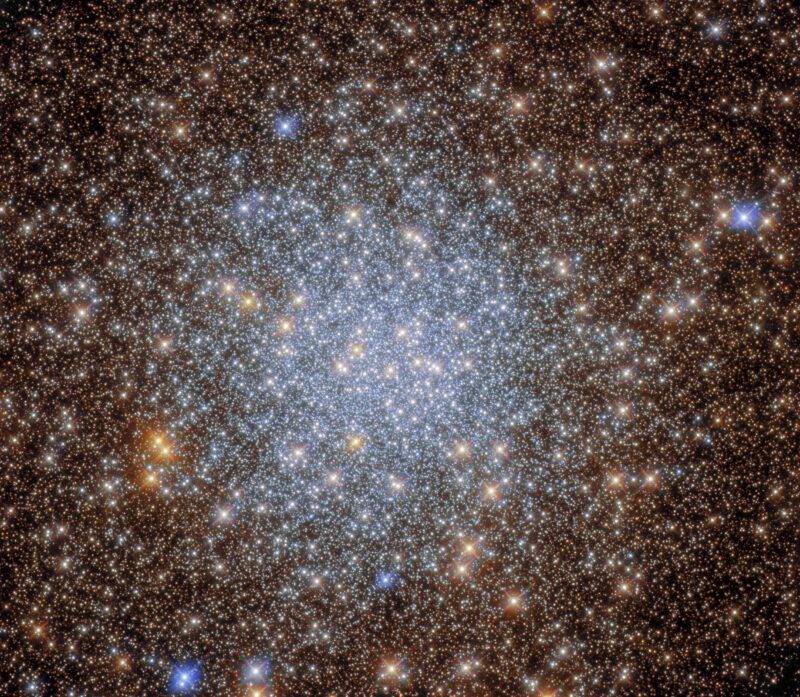
Image du télescope spatial Hubble de l’amas globulaire étincelant NGC 6569 dans la constellation du Sagittaire. Crédit : ESA/Hubble & ; NASA, R. Cohen
L’amas globulaire étincelant NGC 6569 dans la constellation du Sagittaire est capturé dans cette image du ;” data-gt-translate-attributes=”[{” attribute=””>NASA/ESA Hubble Space Telescope. Hubble explored the heart of this cluster with both its Wide Field Camera 3 and Advanced Camera for Surveys, revealing a glittering hoard of stars in this astronomical treasure trove.
Globular clusters — stable, tightly bound clusters that contain tens of thousands to millions of stars — are associated with all types of galaxies. Because of the intense gravitational attraction of these closely packed clusters of stars, globular clusters have a regular spherical shape with a densely populated center — as can be seen in the heart of this star-studded image.
This Hubble observation comes from an investigation of globular clusters which lie close to the center of the Milky Way. These objects have been avoided in previous surveys, as the dust spread throughout the center of our galaxy blocks light from these globular clusters and alters the colors of the stars residing in them. The last factor is particularly important for astronomers studying stellar evolution, as the colors of stars can give astronomers insights into their ages, compositions, and temperatures.
The astronomers who proposed these observations combined data from Hubble with data from astronomical archives, allowing them to measure the ages of globular clusters including NGC 6569. Their research also provided insights into the structure and density of globular clusters towards the center of the Milky Way.



